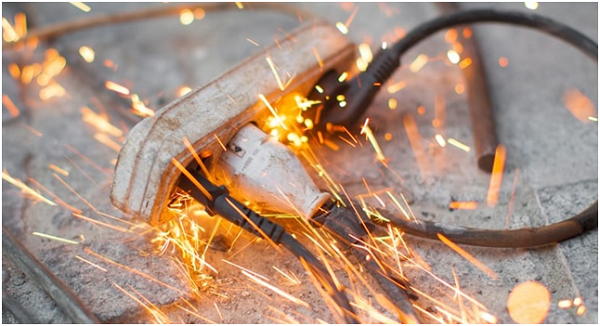Tis The Season: Weathering the Winter Elements and The Manhole Issues
Winter is coming. And each year, winter seems to be arriving earlier, staying longer and materializing more extreme weather conditions be it the seasonal snowfall New Yorkers have come to expect, or catastrophic flooding as witnessed by Hurricane Sandy in 2012. Some people see the increase in extreme winter weather patterns as an indictment of global warming. Regardless of the cause, when heavy snowstorms, plummeting temperatures and icy conditions arrest an urban center, making headlines, telecommunication, and broadband services brace for possible interruptions.
One of the major problems that is now becoming more and more commonplace in densely populated cities like New York, Washington, D.C., St. Louis, Missouri, and London are manhole fires igniting during the arresting coldest and snowiest months of January and February. But Old Man’s winter below freezing temperatures are not the culprit here. Most fiber optic lines are installed below the frost line which helps reduce and, in many cases, eliminate the threat of cold weather-related interruptions. The temperature inside the conduit underground will not drop below, on average, 25°F. In the extreme case of such an occurrence, there are preventative measures that telecommunication infrastructure installers like Hugh O’Kane Electric (HOK) can deploy to protect fiber optic cables from the elements and help deter water from freezing inside the ducts.
So, with temperature not being the key indictment factor, the most common enabler of winter manhole fires is manmade and has to do more so with chemistry rather than with Mother Nature: rain runoff and snow melt mixing with the corrosive salt spread applied to city streets to reduce icing, flood underground electric structures, eroding the cable insulation between them, according to Bloomberg.
In fact, it has been reported that an average of three manhole explosions occurred per day during the months of January and February in the last decade. Such occurrences can hinder telecommunication services resulting in bad quality of service, return on investment, and business continuity. When these instances occur, they can cause severe damage and serious, at times multi-day network disruptions that can result in broadband and telecommunications downtime across telecommunications network city grids.
Underground fiber optic cables are impacted whenever water is able to make its way into the conduit housing the cables, and freeze. The ice that forms around the fiber optic cables often causes the cables to bend, which arrests the signals sent through the cable and overall internet performance deteriorates. Add to that the chance that de-icing salt seeps into the area, corroding the wires and unleashing gas, which in some cases sparks fires and blows the manholes, turns this into a dire situation.
For NYC metro area enterprises looking to expand, upgrade or install a fiber optic network, having a trusted telecommunications installer as a lead partner can prove paramount in any endeavor looking to mitigate weather-related service disruptions. For more than 30 years, Hugh O’Kane Electric, lead by President Hugh R O’kane; has been the industry’s expert in telecommunications installation, electrical maintenance, and electrical contracting services for New York City and its metro area.
Its institutional knowledge, deep understanding of the area’s network grid, (most of which Hugh O’Kane Electric was involved in installing), and established partnerships with local utilities and suppliers, is pivotal in having when an enterprise wants to lay down its cable via the most optimal route. For Hugh O’Kane Electric, its engineers know where the most congested manholes in the city are located—and most importantly—how to work around those to get the most robust and securest network in place.
So, with temperature not being the key indictment factor, the most common enabler of winter manhole fires is manmade and has to do more so with chemistry rather than with Mother Nature: rain runoff and snow melt mixing with the corrosive salt spread applied to city streets to reduce icing, flood underground electric structures, eroding the cable insulation between them, according to Bloomberg.
In fact, it has been reported that an average of three manhole explosions occurred per day during the months of January and February in the last decade. Such occurrences can hinder telecommunication services resulting in bad quality of service, return on investment, and business continuity. When these instances occur, they can cause severe damage and serious, at times multi-day network disruptions that can result in broadband and telecommunications downtime across telecommunications network city grids.
Underground fiber optic cables are impacted whenever water is able to make its way into the conduit housing the cables, and freeze. The ice that forms around the fiber optic cables often causes the cables to bend, which arrests the signals sent through the cable and overall internet performance deteriorates. Add to that the chance that de-icing salt seeps into the area, corroding the wires and unleashing gas, which in some cases sparks fires and blows the manholes, turns this into a dire situation.
For NYC metro area enterprises looking to expand, upgrade or install a fiber optic network, having a trusted telecommunications installer as a lead partner can prove paramount in any endeavor looking to mitigate weather-related service disruptions. For more than 30 years, Hugh O’Kane Electric, lead by President Hugh R O’kane; has been the industry’s expert in telecommunications installation, electrical maintenance, and electrical contracting services for New York City and its metro area.
Its institutional knowledge, deep understanding of the area’s network grid, (most of which Hugh O’Kane Electric was involved in installing), and established partnerships with local utilities and suppliers, is pivotal in having when an enterprise wants to lay down its cable via the most optimal route. For Hugh O’Kane Electric, its engineers know where the most congested manholes in the city are located—and most importantly—how to work around those to get the most robust and securest network in place.




Comments
Post a Comment